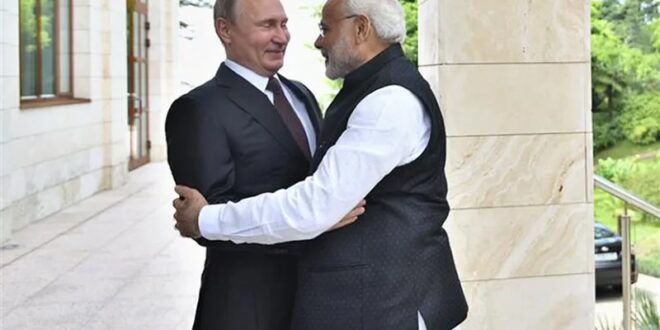Russian President Vladimir Putin’s visit to India has bridged some recent policy gaps between Moscow and New Delhi, but structural problems will continue to bedevil the relationship demanding a very calibrated approach to bilateral ties from both countries.
The structural problems embedded in the uncertain international situation are reflected in the winds that buffet the relationship. India and Russia are restructuring their ties while their main partners — the United States for India, and China for Russia — are locked in a competition for global primacy.
Matters are further complicated by India’s confrontation with China, and Russia’s adversarial ties with the West. Add to this mix weak India-Russia economic ties and the natural affinity of Indian elites for the US, and it would not be surprising if a pessimist felt that the future of the India-Russia relationship was bleak.
However, the outcomes of Putin’s interactions with Prime Minister Narendra Modi indicate that they are aware of the challenges facing the ties, and are working towards a roadmap to navigate the obstacles.
They appear to have identified the lack of economic traction as their primary challenge. The focus is now on connectivity projects — linking Chabahar to the North-South Transport Corridor (INSTC), and the Chennai to Vladivostok maritime corridor. The connectivity projects are expected to encourage joint ventures in the Russian Far East, boost co-operation in hydrocarbons, civil nuclear energy, science, technology, space as well as the financial sector.
The two sides also appear to have understood the importance of private sector participation in the economic sector. Directing the $1 billion credit line for projects in the Russian Far East, announced by Modi in 2019, towards promoting private sector engagement would significantly help achieve this aim.
The Indians are also innovatively looking at linking defence ties to improving economic ties through joint ventures in India. The Russians have decades of experience of producing weapons platforms in India, and are keen to participate in the ‘Make in India’ programme with the added facet of technology transfer. The deal to produce the AK-203 rifles and frigates for the Indian Navy are reflective of this eagerness.
More such deals are likely after the extension of the agreement on military co-operation. The 10-year extension signifies that the two countries envisage close co-operation between each other’s defence sectors for several more years, probably decades. Additionally, the Reciprocal Exchange of Logistics Agreement (RELOS) is likely to be signed sooner rather than later despite detractors suggesting that India couldn’t have similar agreements with the US and Russia.
The RELOS is like the Logistics Exchange Memorandum of Agreement (LEMOA) between India and the US, which gives access to designated military facilities on either side for refuelling and replenishment. The agreement was not signed during the summit because of some ‘technical differences’, which some sources described as differences about translation versions.
The joint statement and official briefings, suggest that the two sides narrowed their differences on vexing issues such as Afghanistan, the Indo-Pacific, the QUAD, and Russia’s ties to China. On the last it became clear that India understands the Russian position on the India-China border dispute that flared up in 2020. Not only understands, but is comfortable with Russia’s ‘neutrality’. Something that made possible Putin’s suggestion of a Russia-India-China in-person summit.
In response Modi apparently said that it could not be considered before Chinese de-escalation on the border. The utterances by Putin’s foreign policy adviser, Yuri Ushakov, that such a summit is likely in the middle of next year hints at the potential benefits of close ties with Russia.
But despite all these positive signs one must be careful not to overestimate their significance when considered alongside some long-term trends in international affairs such as the relations of the US — the preeminent world power — and its closest challengers China and Russia. The adversarial nature of US ties with China and Russia is unlikely to significantly change in the next few years.
India should hope that Russia stays neutral in the US-China tussle for primacy. This requires the US and Russia to reach some accommodation on vital issues such as arms control, European security, Russia’s desire for influence in some areas well as beyond its borders.
Whichever way the situation evolves, India and Russia have an over-arching common goal — a multi-polar world — which should keep them interested in maintaining robust bilateral relations for years to come. The Modi-Putin summit appears to reflect this understanding, and determination to follow this road.
 Eurasia Press & News
Eurasia Press & News




